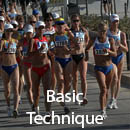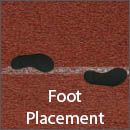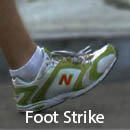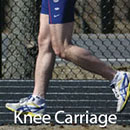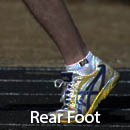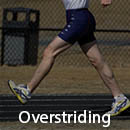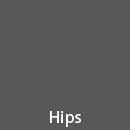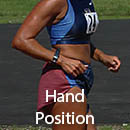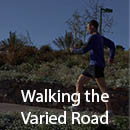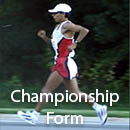Race Walking Technique
Posture
Good posture is very important, and many race walking instructors begin lessons with this topic. However, I usually complete my lessons with posture. I believe people fall into one of two categories. Either they follow common sense and have reasonably correct posture, or they have walked their whole lives with incorrect posture that requires a long time to correct. To maximize efficiency and reduce potential injuries, concentrate on perfecting posture.
Use Common Sense
The principle of good race walking posture is fairly simple. Your body is straight up and down throughout the entire stride. Years ago, walkers believed proper posture meant leaning from their ankles; however, to do so, they often bent from the waist instead. Such bending causes the hips to move backwards, thus reducing the ability to extend the hip and accelerate the stride.
I actually learned to race walk leaning forward from the ankles. The lean forward placed excessive stress on my lower back, and when I walked long distances, the strained muscles constantly felt sore.
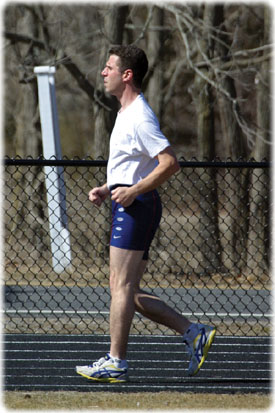
Correct Posture
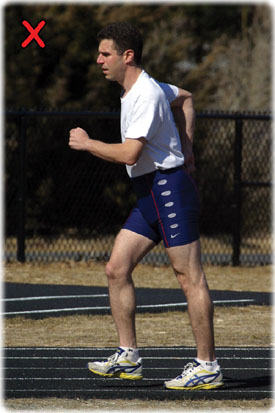
Bent Forward
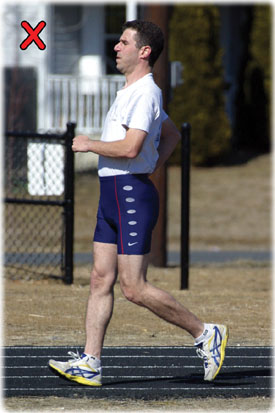
Sway Back
Many promoters of the forward lean cite traditional sprinters’ leaning forms as examples of why race walkers should have the same posture. Conversely, the case of Michael Johnson who set a world record for the 200-meter sprint at the 1996 Olympics might support my argument that an upright posture is best. (Johnson broke the traditional mold of sprinters by maintaining a straight, up-and-down posture, similar to the posture of race walking.) However, race walking and sprinting are two totally different biomechanical activities and should not be compared in this manner.
Sway Back
You still may hear a knowledgeable coach tell a race walker to lean forward. Often this is to correct bad posture such as leaning back, or sway back. Aside from adding stress to the back, leaning back causes more of a race walker’s mass to be centered behind the hips. The race walker in effect is carrying a weight behind him or her, thus inhibiting forward progress.Head Position
Many novice walkers, instead of looking ahead, look at the ground five feet in front of them. This causes the neck to bend and stresses the neck and shoulders. Eventually this stress leads to cramping of the neck or shoulders.Look ahead, not at the ground. Often race walkers claim they look down to make sure they don’t trip. By looking ahead, you see enough to prevent tripping. Another common excuse is watching one’s own form. While it may be necessary to look at your feet some of the time, this practice should be minimized.

